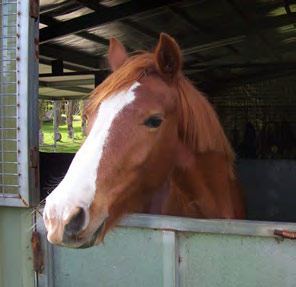Over the stable door
Greetings Fellow Equines and Horse Owners!
Reasonably good news all round, with some rainfall and supposedly more to come – bring it on!
Also my hoof abscess seems to have cleared up completely now, so things back to normal in that department.
The next issue on the horizon is the spring flush in the grass. So far I am keeping my weight fairly constant at around 480kg. My owners are still using the weight tape on me most days and always before being ridden. It’s not so much what I actually weigh, but the change in my weight which is significant. I did founder once 10 years ago due to getting an abscess and not being able to be worked. I piled on the weight and of course foundered. Hence my owners are super vigilant now and keep an eagle eye on my weight during the season changes. I am prone to be on the cuddly side, but laminitis can affect any breed of horse (I am a welsh cob). By making sure that your trusty steed gets around 80% roughage (read dry hay) that will help to keep him safe from foundering.
If you feel that there is too much of the green lush pasture around and want to confine your horse, ensure that he has ad lib quantities of the dry stuff; and the plainer the better. Some horses will cope better than others when confined, so if you need to let him out for R and R, then make it later in the day when the sugars are not rising in the grasses. Unfortunately laminitis can onset in a matter of a couple of hours and those early hours of the morning from sunrise to around 3pm are the most risky. Once a horse has foundered, they can be more susceptible to a recurrence of the condition (hence my owners concern). It is a very painful condition, causing separation of the hoof wall and rotation of the pedal bone. It is usually irreversible and in extreme cases, the horse may have to be put down. So prevention is the key here.
When a horse is brought in in preparation to be ridden, the very first thing to do is the cleaning out of the feet. This way, heat can be detected as a hoof is picked up and a comparison done between each hoof. Laminitis commonly affects front feet, but it can be one or all, no hard or fast rule.
A horse has a digital pulse just down below and at the side of the fetlock joint. In normal conditions, this is difficult to detect, but in founder, it can often be easily felt. If in doubt, don’t hesitate to contact your vet. Again, the old adage ‘no hoof, no horse’ is so true, so feet first before you ride!
Happy and safe riding everyone,
Your trim Hamish

